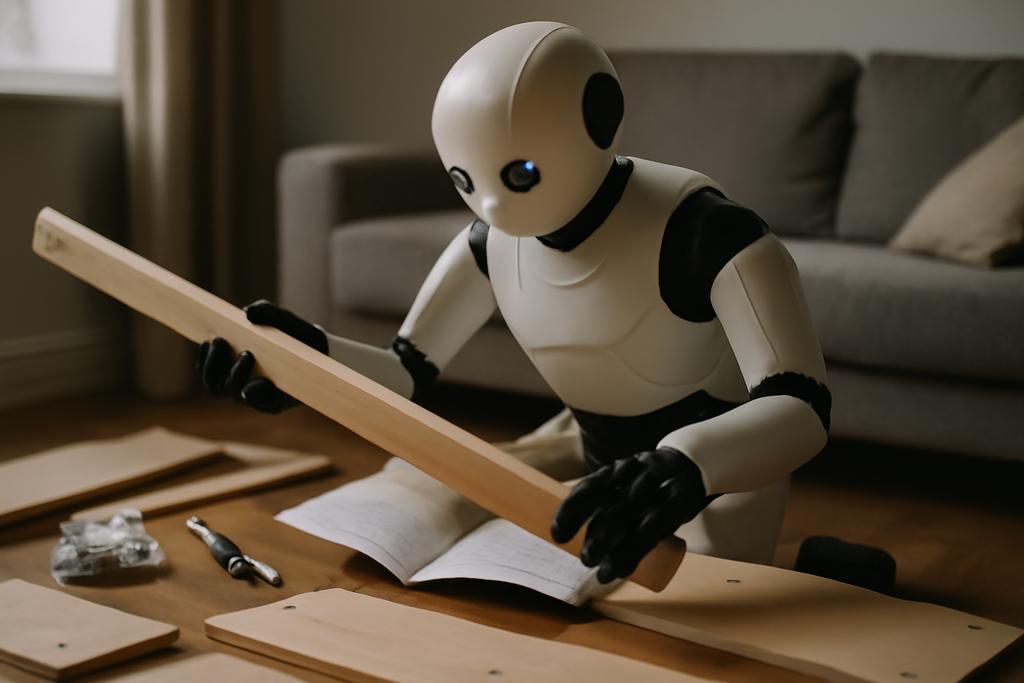Imagine teaching a robot to assemble IKEA furniture. Seems simple, right? But what if the robot keeps confusing similar-looking pieces, or can’t quite grasp the subtle difference between a successful and failed attempt? It’s not a matter of strength or speed, but something deeper: the robot’s ability to ‘imagine’ the consequences of its actions, to discriminate between near-identical scenarios that demand vastly different responses.
Researchers at Sun Yat-sen University in China are tackling this very problem, which they call ‘diffusion representation collapse’ in robot learning. Led by Guowei Zou, they’ve developed a clever new approach called D²PPO (Diffusion Policy Policy Optimization with Dispersive Loss) that dramatically improves a robot’s ability to perform complex manipulation tasks.
The ‘Imagination’ Bottleneck: Representation Collapse
The core issue? Today’s robot learning algorithms, particularly those based on diffusion models, often struggle to differentiate between semantically similar observations. Think of it like a blurry photo where all the details are mashed together. The robot sees two slightly different states – say, a robotic arm almost perfectly aligned for grasping, versus one off by a hair – but its internal representation collapses them into a single, undifferentiated blob.
This ‘representation collapse’ is disastrous for precise manipulation. A human can effortlessly adjust their grip based on minute visual cues, but a robot hobbled by a fuzzy internal model makes clumsy, all-or-nothing decisions. The result: missed grasps, failed insertions, and a general inability to handle the nuanced variations inherent in real-world robotics.
According to the paper, diffusion models, while excellent at modeling complex action distributions, rely heavily on reconstruction loss. This loss function prioritizes accurate denoising but overlooks the quality and diversity of the intermediate feature representations. It’s like focusing on the clarity of the final image while neglecting the sharpness of the individual components.
D²PPO: Training Robots to ‘See’ the Difference
The D²PPO approach addresses this problem with a brilliant twist: a ‘contrastive loss without positive pairs.’ Traditional contrastive learning, a technique borrowed from computer vision, requires pairing similar and dissimilar examples to teach the system to distinguish between them. This can be complex and computationally expensive, often requiring external data or auxiliary model components.
D²PPO’s dispersive loss takes a different tack. It encourages internal representations to spread out in the hidden space, maximizing feature dispersion within each batch of data. Imagine a crowded room where everyone is trying to maintain their personal space – that’s the effect of dispersive loss. The network is forced to learn discriminative representations, even for similar observations, enabling it to identify subtle yet crucial differences.
The innovation here is that it doesn’t require identifying positive pairs (similar examples). Instead, it treats all hidden representations within each batch as negative pairs, compelling the network to learn diverse features from the get-go. According to the paper, this approach needs no extra pre-training, model parameters, or external data. The researchers at Sun Yat-sen University have essentially found a shortcut to better robot ‘vision.’
Two Stages to Robotic Mastery
D²PPO employs a two-stage training strategy. First, the robot is pre-trained with dispersive loss to encourage feature dispersion within each batch. This stage lays the groundwork for a richer, more detailed internal representation of the world.
Second, the robot is fine-tuned using PPO (Proximal Policy Optimization), a reinforcement learning algorithm that maximizes task success. This stage refines the robot’s control policies, ensuring that it can leverage its enhanced representations to achieve specific goals.
It’s a clever combination of generative expressiveness (diffusion models) and goal-directed precision (reinforcement learning), ensuring that similar observations maintain distinct feature representations crucial for precise manipulation tasks.
Real-World Results: A Gripping Success
The researchers rigorously tested D²PPO on a range of robotic manipulation tasks, including lifting objects, grasping cylindrical objects, precise peg-in-hole placement, and multi-object coordination. The results were striking.
On RoboMimic benchmarks, D²PPO achieved an average improvement of 22.7% in pre-training and 26.1% after fine-tuning, setting new state-of-the-art results. But the real proof came in real-world experiments on a Franka Emika Panda robot, where D²PPO demonstrated significantly higher success rates, particularly in complex tasks.
The team discovered that early-layer regularization benefits simple tasks, while late-layer regularization sharply enhances performance on complex manipulation tasks. This suggests that the ‘level’ of detail the robot needs to pay attention to varies depending on the challenge at hand.
For example, the Transport task, involving dual-arm coordination and complex object handoffs, saw a dramatic improvement. Without dispersive loss, the robot often failed due to collisions between arms or premature release of objects. With D²PPO, the robot could ‘see’ the subtle spatial-temporal relationships required for success.
What’s Next? Robots with Finer Senses
The implications of D²PPO extend far beyond assembling IKEA furniture. By addressing the fundamental problem of representation collapse, this research opens the door to robots that can perform more intricate, delicate, and adaptive tasks.
Imagine robots assisting in surgery, handling fragile materials in manufacturing, or even exploring hazardous environments with unprecedented dexterity. D²PPO provides a crucial step towards robots that can truly ‘see’ and interact with the world in a meaningful way.
The researchers note that while their current evaluation focuses on manipulation tasks, future work could explore dispersive regularization in other robotic domains. Could this technique improve robot navigation, perception, or even social interaction? Only time will tell, but one thing is clear: D²PPO is helping robots develop a finer sense of the world around them.










